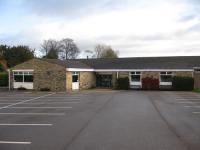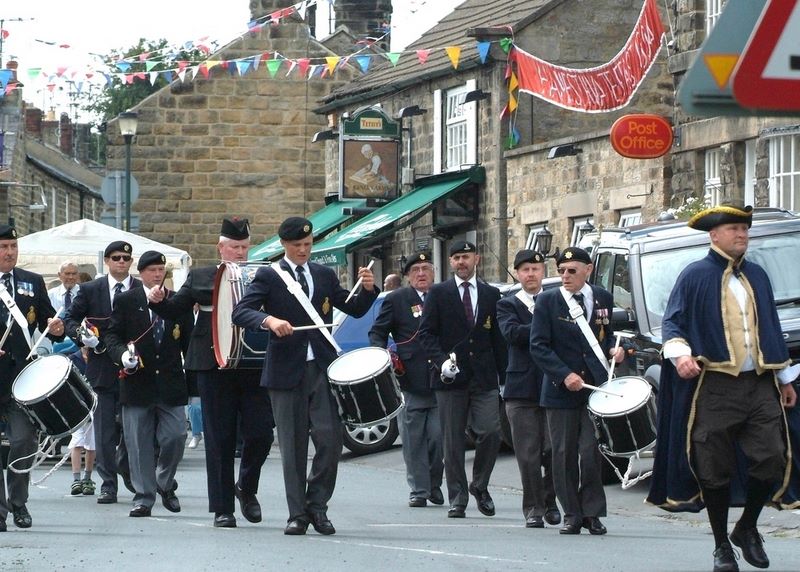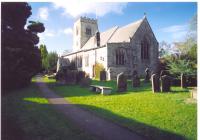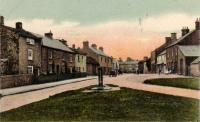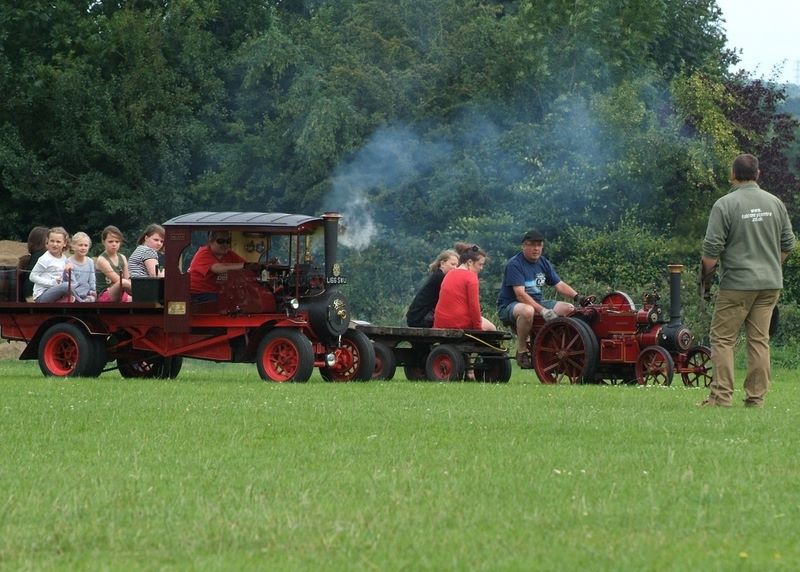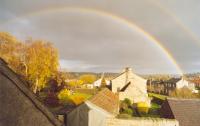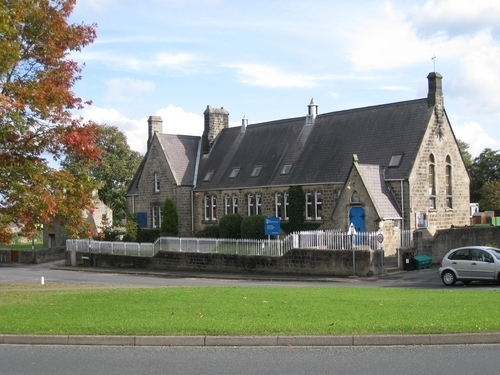Recent articles
© DT Online 2010 - 2025
| Amy Woodforde-Finden BiographyAmy Woodforde-Finden - from research by Elliot Gray-Clough It’s difficult to separate fact from fiction when it comes to the life of Amy Woodforde-Finden. There are many accounts about her life, which all differ slightly, and which repeat speculation as fact. Amelia Rowe Ward was born in 1860 in Valparaiso, Chile, the 8th child of Alfred Richard Ward (1811-1867), a Consul from New York, and Virginia Worthington Heath (1825-1912) from Philadelphia, who married in Valparaiso on 7th January 1846. Her siblings were Virginia (1846-1849), Alfred (1848-1888), Alice (1851-1919), Dudley (1852-1852), Baillie Peyton (1854-1921), Virginia (1855-1934), Osbert (1857-1949) and her youngest brother Richard (1863-1874), who died in Paris.
Amy's brother Baillie Peyton was named after Balie Peyton, who was a US Congressman and the US Envoy to Chile under President Zachary Taylor. It was Baillie Peyton who had recommended Amy's father Alfred Ward for the post of US Consul in Chile. Following her father’s death in 1867, her mother Virginia moved to London. In 1871, she lived at 33 Eastbourne Terrace, Paddington, with her widowed sister Fanny Hobson and her eldest daughter Alice. Perhaps they had only recently arrived and the other children were to follow soon after. The occupation of both Virginia and Fanny was given as “Property in Funds.” Naturalised as UK Citizens
In 1873, Virginia and her children were naturalised as UK citizens, according to her Certificate of Naturalization to an Alien at the Home Office, which states, “Whereas Virginia Worthington Ward, an Alien, now residing at No 30, Elvaston Place, South Kensington, in the County of Middlesex, has presented to me, the Right Honourable Henry Austin Bruce, one of Her Majesty’s Principal Secretaries of State, a Memorial, praying for a Certificate of Naturalization, and alleging that (s)he is a subject of the United States of America, aged 44 years, Widow of the late Alfred Richard Ward, formerly a merchant at Valparaiso, in Chile, in South America, and has five children under age residing with her, viz. Baillie Peyton Ward (aged 19 years), Virginia Ward (aged 17 years), Osbert Ward (aged 15 years), Amelia Rowe Ward (aged 12 years) and Ricardo Ward (aged 9 years) and that in the period of eight years preceding his (her) application (s)he has resided for five years within the United Kingdom, and intends, when naturalized, to reside therein.” In 1881, Amy lived at 30 Elvaston Place, Kensington, with her mother Virginia and her brother Baillie. Her mother was an annuitant, living off an annuity, and they had four servants (Jane Blacker, Mary Baldwin, Maggie Clunas and May Herbert) and two visitors (Florence Stewart and Marion Shankland).
In 1891, Amy was a sculpture artist, living at 31 Hereford Square, Kensington, with her mother Virginia, who was living on an allowance, and her brother Baillie, a clerk. They had three servants (Emily Curtis, Fanny Reynolds and Anna Hughes).
In 1901, her mother Virginia Worthington Ward lived in flats at 63 Drayton Gardens, Kensington, with her servant, Ellen Hagis. In 1911, she was “feeble minded” and staying at The Mount, a boarding house in Chandler’s Ford, Hampshire. Her mother died at Hollyhurst, West Hill Road, Bournemouth on 10th May 1912. She didn’t leave a will, and administration of her estate of £654, 19s, 8d was granted to her oldest surviving daughter Alice MacLeay.
Amy's Marriage Meanwhile, Amy Ward married Woodforde Woodforde-Finden (1844-1916) in Bombay, India on 17th September 1893. Woodforde worked on the Indian Medical Staff and claimed he was a widower. He was the son of George Corfield Finden (1810-1885), an artist and historical engraver, and Melliora Woodforde (1813-1905). He had been previously married to Valence Aimee Robinson (1853-1927) in Allahabad, Bengal on 10th February 1872, when he was an Assistant Surgeon in the Bengal Medical Establishment. They had three children: Aimee (1874-1874), Eric (1875-1913) and Leyton (1879-1900). Aimee was born in Mian Mir, Mussoorie, Dehradun, Uttarakhand, India on 7th Jul 1874, where her father worked as a Surgeon in the 11th Bengal Lancers, but she sadly died when she was only 10 days old. Eric was born in Mian Mir on 31st August 1875 and Leyton was born in Paris, France in 1879. Some articles also incorrectly state that Woodforde had been previously married to Louise Maud Morden in Horringer, Suffolk in 1869, but there is no record of this marriage, and he was a bachelor when he married Valence. In 1881, Eric and Leyton lived with their grandparents, George Corfield Finden and Melliora Woodforde at 13 Ramsden Road, Streatham, London. Leyton was baptised at St Mary’s Balham on 23rd January 1887. His address at the time was 13 Ramsden Road, his grandparents’ residence, and it stated that his parents were Woodforde Woodforde-Finden, Surgeon Major in the Indian Service, and his wife Amy, who was actually Valence Aimee Robinson. In 1891, Eric and Leyton were students at Albion House School, Albion Road, Margate, Kent.
Valence Aimee Robinson (1853-1927) Woodforde claimed that he was widowed when he married Amy, but that wasn’t true, he was still married. According to Joseph McAleer’s book “Escape Artist – The Nine Lives of Harry Perry Robinson”, Valence’s brother, “the marriage was strained, and Valence’s mental state was increasingly unstable – in fact, there were questions about Leyton’s parentage. By 1881, Eric and Leyton were living with their Finden grandparents. In 1890, Valence, now a widow, married another physician, Frederick Mercer. In 1892, she was admitted to an asylum in Norfolk, and by 1895 was living on her own in London, divorced by Mercer and penniless.” Of course it is not true that Valence was widowed, as her husband Woodforde married Amy in 1893. Valence herself married Frederick Mercer in St Mary, Stratford Bow on 20th March 1890 and claimed that she was Valence Aimee Fletcher, widow, the daughter of Julian Robinson, clergyman. As they were not divorced, this means that Woodforde and Valence’s second marriages were bigamous. Rumour also has it that Valence descended further into madness and fled England for Africa, specifically Bulawayo, in Zimbabwe, where she lived quite happily in a barrel on the roadside, greeting passers-by. In fact she had a daughter Constance Stewart Mercer in Ongar in 1891 and then lived with her mother Harriett in Brighton until her death in 1904, and was then supported by her siblings when she lived in London. She was often ill and spent time in mental asylums. She was frequently penniless and spent much of the money given to her by her siblings on drugs and alcohol and died in Blean, Kent on 13th May 1927. In 1901, Amy lived in Lower Bedford, Romford, Essex, with her husband Woodforde Woodforde-Finden, who was a Retired Lieutenant Colonel in the Indian Medical Service in British India. They had three servants – Alice Davis (parlour maid), Carry Davis (cook) and Laura Davis (housemaid), who were all sisters. In 1911, Amy and Woodforde lived at 45 Portland Court, St Marylebone, London. They had two servants – Elizabeth Ann May Hopkins and Minnie Lowing.
Paget's Horse Her stepson Leyton served with the 52nd Company, Paget’s Horse, of the 19th Battalion of the Imperial Yeomanry (service number 13119) in the Boer War and was killed on 30th May 1900 in the Battle of Faber’s Put, Douglas, South Africa. He left £753, 2s, 4d and his will was as follows, “This is the last will and testament of me, Leyton Woodforde Finden of Lower Bedfords, Havering atte Bower, in the county of Essex, Gentleman, at present on active service in South Africa with Paget’s Horse of the Imperial Yeomanry. I hereby revoke all former Wills and Testamentary dispositions made by me. I appoint Wensley Barclay Hunton of Richmond in the county of York, Esquire, sole executor of this my Will. I devise and bequeath all my real and personal estate to my brother Eric Woodforde Finden absolutely.” Administration was granted to his brother Eric Woodforde-Finden of Seckington Rectory, Tamworth, in the county of Stafford, Esquire. Her stepson Eric also served with Paget’s Horse in the Imperial Yeomanry in the Boer War (service number 27612). Eric is not on the 1901 census as he was serving in South Africa at the time, but his address prior to the census was Seckington Rectory, and that was his address on the 1911 census too, so he had been there for some time. He was discharged from the Imperial Yeomanry on 11th September 1901
He died at The Laurels (now Farleigh House), Hollins Lane, Hampsthwaite on 13th April 1913, aged 35. He accidentally drowned by falling into his bath, when in an epileptic fit. Due to the circumstances of his death, the certificate was received from John Charles Radcliffe Husband, Coroner for Ripon and Kirkby Malzeard, following an Inquest held on 16th April 1913. He had been treated by Dr John Ashby of Bilton Garth (now Thimbleby House) for epilepsy. Woodforde Woodforde-Finden Her husband Woodforde died at 41 Beaumont Street, St Marylebone, London on 27th April 1916, aged 71. His usual address was 45 Portland Court, St Marylebone and he was a Retired Lieutenant Colonel in the Indian Medical Service. He was a Member of the Royal College of Surgeons (MRCS), having studied at King’s College, London, and a Licentiate of the Royal College of Physicians (LRCP) in Edinburgh. His cause of death was Carcinoma Ventriculi (which he had suffered with for 9 months), a secondary growth in the liver and jaundice for 3 months and asthenia for 20 days. His widow Amy, of 45 Portland Court, was the informant. He left £1520, 5s, 9d and his will stated, “Be it known that Woodforde Woodforde Finden of 45 Portland Court, Great Portland Street, in the County of Middlesex, formerly of Lower Bedford, Havering-Atte-Bower, in the County of Essex, late Brigade Surgeon, Lieutenant Colonel, Indian Medical Service, who died on the 27th day of April 1916 at 41 Beaumont Street, Wimpole Street, in the County of Middlesex made and duly executed his last will and testament and did not therein name any executor.” Administration was granted to his widow Amy, as follows, “I hereby revoke all former Wills and Testamentary dispositions made by me. I desire and bequeath all my real and personal estate to my wife Amy Woodforde Finden (formerly Amy Ward) absolutely. I know that my wife will carry out my wishes that I may have expressed to her as to the disposal of any particular article.” The witnesses were Alice Annie Davis and Laura Louisa Davis of Writtle near Chelmsford, who were their servants on the 1901 census. Amy Woodforde-Finden Amy Woodforde-Finden died at 3 Cork Street, St James and St Anne, London on 30th March 1919, aged 58. She had previously lived at 16 Alexander Square, South Kensington. Her death certificate made no mention of her illustrious career as a composer and, perhaps in keeping with the times, her profession was “widow of Woodforde Woodforde-Finden, Surgeon, Colonel, Indian Army.” She died of arteriosclerosis, aortic disease and cardiac failure and her nephew, Dudley Northall-Laurie, of 41 Kilburn Gardens, Hampstead, was the informant. She left £17407, 16s, 9d in a detailed will, which stipulated the following legacies:
Music Study Amy Woodforde-Finden studied music privately under Adolph Schloesser (1830-1913), Herr Winter and Amy Horrocks (1867-1919), who had herself studied piano and composition at the Royal Academy of Music with Adolf Schloesser in 1882 and who taught music in London after 1889. Monument by E G Wade Her sister Virginia Northall-Laurie unveiled the memorial. She was the widow of Reginald Peter Northall-Laurie, merchant and barrister. The memorial was given by her late sister, Alice MacLeay, who died seven months after Mrs Woodforde-Finden. Her sister Alice inherited a large amount of money from their uncle, Horatio Ward, an American Securities dealer who left £90,000 when he died in Paris in 1867, and she married an East India merchant, Sinclair Mellor Searight MacLeay, who left £105,366 when he died in 1911. Alice left £62,986, Amy left £18,922 and Virginia left £15,514. The memorial was created by George Edward Wade, a well-known sculptor who also created monuments to Queen Victoria, King Edward VII, King George V, Queen Alexandra of Denmark and Queen Mary of Teck, and the founders of the Salvation Army, William and Catherine Booth. The sculpture was originally designed to be in bronze on Amy’s grave, but they decided it would be too heavy, so made one in white marble inside the church instead. An article in the Yorkshire Evening Post on 5th February 1923 acknowledged, “though, in a way, the marble, life-size figure will be out of keeping with the old oak and the orderly simplicity of the village church, its beauty will be sufficient excuse; and in the hearts of the dalesmen there is a feeling of pride that their little hamlet should be chosen for the memorial of one whose name is known the world over.”
When the memorial was unveiled in 1923, the vicar’s daughter, Miss Peck, sang her song “White Sentinels”. The vicar at the time was Reverend Herbert John Peck (1868-1949) and I believe the daughter in question was Geraldine Edith Peck (1898-1971), who became an Associate of the Royal College of Music and who was a fine contralto of extensive range, performing the songs by Camille Saint-Saens, Albert Mallinson and Granville Bantock at Portsmouth Guildhall in 1927
The Harrogate Royal Hall orchestra, conducted by Howard Carr, also performed “Till I awake” from the “Indian Love Lyrics”, “L’Envoir” from “The Myrtles of Damascus” and “Allah be with us” from “A Lover in Damascus” at the unveiling, and John Hill of Bradford sang two sacred solos.
Laurence Hope Amy Woodforde-Finden set her music to lyrics by Laurence Hope, the pen-name of Adela Florence (Violet) Cory (1865-1904), the wife of Lieutenant General Malcolm Hassells Nicolson (1843-1904). The executor for both Amy Woodforde-Finden’s will and Malcolm Hassells Nicolson’s will was Austin Low of Grindlay & Co, the historic bank for the British Army in India, whose headquarters were in London. Violet’s sister Anne Sophie Cory was also a celebrated author under the name Victoria Cross, and they were the daughters of Colonel Arthur Corry, the founder, proprietor and editor of Civil and Military Gazette of Lahore, where Rudyard Kipling served his apprenticeship. There is a rumour that Amy was romantically involved with Violet and had run away together whilst in India. In reality, they only met when they were in London, around 1902. The Woodforde-Findens were living in Lower Bedfords, Romford, Essex in 1901 but moved to 45 Portland Court before 1911. The Nicolsons lived at 7 Hertford Street, St George Hanover Square in 1901 but returned to India shortly afterwards and died there in 1904. An article in the Northwich Guardian on 30th September 1913 relates an interview with Amy Woodforde-Finden in which she describes writing to Laurence Hope (Violet Nicolson) and later meeting her. An article in the Northwich Guardian on 30th September 1913 relates an interview with Amy Woodforde-Finden in which she describes writing to Laurence Hope (Violet Nicolson) and later meeting her, “I well remember my first impressions of her, which were very favourable. She was decidedly pretty, dark, with dreamy blue eyes, and had soft brown hair – lots of it – parted in the middle. The portrait of her, in front of her last book, “Indian love,” does not do her justice.” Aldwych Theatre Her works were converted into a theatre performance at Aldwych Theatre in 1909, which starred Nydia Nerigne, who claimed to be a celebrated Greek actress. She married Henry Arthur Yvery Heathcote, an artist, in Romsey, Hampshire in 1913, but her name was actually Emmeline Taylor and she was from Rochester in Kent. There was also a film adaptation of Indian Love Lyrics in 1923 starring Owen Nares, a well-known stage and film actor, and supported by Harold Lloyd. Newspaper Articles [Leeds Mercury, 17th April 1913] DROWNED IN HIS FOOT-BATH An inquest was held at Hampsthwaite, near Harrogate, yesterday, on Eric Woodforde-Finden, thirty-five years old, the son of Colonel and Mrs. Woodforde-Finden, of London, who are now abroad. Mr. Finden, who was of independent means, lived at The Laurels, Hampsthwaite, and on Tuesday morning, when the servant knocked at his door, no answer was received. Mr. Finden was found on the bedroom floor with his head in his foot-bath, in which there was about a gallon of water. He was dead. He had been treated by Dr. Ashby, of Ripley, for fits. A verdict of “Death by falling into his bath during an epileptic fit” was returned.” HOW “INDIAN LOVE LYRICS” WERE COMPOSED A correspondent of “Woman at Home” relates an interview with Mrs. Amy Woodforde-Finden, the famous song-writer. Mrs. Finden’s early life was spent among the Spaniards. “As a child,” she said, “I used to dance the Cachuca, and I revelled in the wild native melodies. Spanish music is really Moorish, and therefore often Eastern in its form and rhythm, and appeals to me very much. “Later on, after I was married, I travelled for some months in Kashmir, going to out-of-the-way places and studying the native music. Indian music has always fascinated me with its curious monotones and strange lilts. My songs are not, as some people think, adapted from native airs. I have often been asked if “Pale hands” is founded on an Indian air, but it is not; it is absolutely original.” “Did you begin to compose as a young girl?” “I wrote a song when I was nine and published a waltz when I was fifteen, so I may say I have always written music, from my childhood.” “How did you come across the words of your famous “Indian love lyrics”?” “Well, in rather a curious way. I saw advertised, in some newspaper, a book of Indian love poems, called “The garden of Khama”, which was coming out shortly, and being interested in everything Indian, I ordered it from the stores. They sent it to me immediately on publication, so I was probably the first to have it in the house.” “When I read the poems, they inspired me to set them to music at once. I took the book straight to the piano, and in ten days I had set five of them. “I then wrote to “Laurence Hope (c/o Mr. Heinemann), the author, asking for permission to publish the words, and inquiring what “his fee would be for the use of them. I addressed the author as “Laurence Hope, Esq.” thinking that, of course, the book was a man’s. “In reply, I received a wire from Morocco: “With pleasure – no fees.” This, of course, was most unusual, and I waited until a letter came – written in a bold, masculine hand – confirming the telegram. “Soon after, the author returned to England, called to see me, and turned out to be Mrs Nicholson, wife of General Nicholson, of the Indian Army, who was in Kandahar at the time that my husband, Colonel Woodforde-Finden, was on Sir Donald Stewart’s Staff there. As all the world now knows, she was a sister of the gifted novelist, Victoria Cross, and the name “Laurence Hope” was merely her nom-de-plume. I well remember my first impressions of her, which were very favourable. She was decidedly pretty, dark, with dreamy blue eyes, and had soft brown hair – lots of it – parted in the middle. The portrait of her, in front of her last book, “Indian love,” does not do her justice. Her features were not so heavy-looking as they appear there. She was rather carelessly dressed, in masculine style, in a coat and skirt, and she shook hands with a firm grip – so hard as to hurt – like a man. “We had a talk about her lyrics, of which she did not in the least know the value, and a little later the songs were published by Messrs. Boosey. The first year I sold 23,000 copies, counting America." The late Col. Woodforde-Finden The funeral takes place to-day at Hampsthwaite near Harrogate, of Brigade Surgeon Lieutenant Colonel W. Woodforde-Finden, IMS, who died last Thursday after a long illness, aged 71. He obtained his first commission on October 1, 1866, doing duty with the 11th Bengal Cavalry, 2nd Gurkhas, and other regiments. He was on Lord Lytton’s Staff at Simla in 1876, and on Sir Donald Stewart’s Staff in Afghanistan in 1878-1880. He took part in the march from Kabul with Lord Roberts to the relief of Kandahar, being mentioned in dispatches and receiving the medal with clasp and bronze star. He served in Burma in 1887-88 (medal with clasp), and on the North-West Frontier of India, second Miranzai Expedition, in 1891 (clasp). Mrs Amy Woodforde Finden, whose sudden death was announced yesterday, was with Mme. Liza Lehmann, one of the originators of the “Song Cycle.” The amateur singer is particularly indebted to her, for she imported into her compositions a sympathetic but not too difficult style and atmosphere. The “Indian Love Lyrics,” probably the most popular song cycle ever written, is her best known work.” Mrs Amy Woodforde-Finden, whose sudden death is announced, was, with Mme. Liza Lehmann, one of the originators of the “song cycle,” and as such will be sadly missed in the musical world. The amateur singer is particularly indebted to her, for she imported into her many compositions a distinct style and atmosphere which were grateful to the executant without being too difficult from the technical point of view. The “Indian Love Lyrics,” probably the most famous song cycle ever written, are an excellent instance of her powers in this direction.” I suppose Amy Woodforde-Finden’s “Indian Love Lyrics” will rank as the most popular ballad composition of the last generation. Even to-day they are difficult to escape if one is not quite a recluse. Mrs Woodforde-Finden was born at Hampsthwaite, a small village just outside Harrogate, where, I hear, a handsome memorial to her is to be erected.” (Of course it is quite incorrect to state that she was born in Hampsthwaite, when she was born in Chile – the Daily Mirror had not done its research!). Those “Love Lyrics” – I am taken to task because in mentioning the memorial to Amy Woodforde-Finden, composer of the “Indian Love Lyrics,” I omitted any reference to the writer of the verses, namely, Laurence Hope (the late Violet Nicolson). The point, however, is that had certain of these poems not been set to music by Mrs Woodforde-Finden, they would not have become so widely known. It was the tunes that counted. Opinions differ violently about the merits of Laurence Hope as a poet.” [Yorkshire Evening Post, 5th February 1923] YORKSHIRE’S LINK WITH THE “LOVE LYRICS” A NIDDERDALE MEMORIAL PERPETUATING THE MEMORY OF AMY WOODFORDE-FINDEN From the exotic romance of the East to the intimate homeliness of a Yorkshire dale is a far cry, and it is only by chance (a tragic chance) that in the tiny village of Hampsthwaite, Amy Woodforde-Finden, the composer of the “Indian Love Lyrics,” lies buried. Hampsthwaite is essentially English; rural England in its most alluring and typical aspect. It lies in the valley of the Nidd within sight of, but not overshadowed by, the grim and rather forbidding moorland which hangs over Pateley Bridge on the north, and the wild stretches of Blubberhouses on the south. You enter the village by crossing the river – a placid, friendly stream. Just beyond the river bridge, on your right, lies the church. Your first surprise, after admiring the fine war memorial, is a welcome one – the church is open all day; your next is that it bears the name of St Thomas a Becket, surely a very rare dedication. A statement inside the building tells how on the site of a previous Saxon building, a church was erected in 1175, only three years after Becket’s canonisation, and was destroyed by the Scotch after the Battle of Bannockburn in 1315. A VILLAGE DWARF Of this church nothing remains but a few old stones. These and others, said to belong in the original Saxon building, are incorporated in the wall of the present church. Some fifty years later, another church was built, and of this all that was saved from a fire in 1831 were the bases of the pillars, some of the old oak, and the very ancient and curious font. Another great restoration took place in 1901 and 1902. The old oak includes a churchwarden’s pew of 1695, a panel with the name of the vicar (Samuel Sugden) and churchwardens of 1671, another panel commemorating a gift by Mr Thomas Louty (a member of a family which seems to have been prominent in the parish), and several other very fine pieces. In the vestry hangs a very quaint coloured print of one Jane Ridsdale, a native of the parish, who at the age of 33 was only 33 ½ inches in height, but was none the less of a cheerful disposition. In the porch is an old stone inscribed thus:- Feb 13, AD 1635 ADVICE FROM THE TOMB In the churchyard is a tomb on which the dead man is represented as quitting this life with no little satisfaction, concluding with these words:- What faults then found at is me, take care to shun, It is in such surroundings that Amy Woodforde-Finden and her husband and his son are buried. The son, poor fellow, shocked into epilepsy by witnessing his brother’s death in South Africa in 1900, was brought to Hampsthwaite to live in the kindly care of a doctor. Some twelve or thirteen years later he was drowned in his bath in the course of an attack. Woodforde-Finden Memorial Two years later, in 1915, Col. Woodforde-Finden died, and his widow laid him beside his son and erected a simple stone to commemorate the two who lay there and the other one who had died for his country across the war. And when she died, her sisters brought her there as well. THE DALESMEN’S PRIDE Now her memory is to be perpetuated in a strikingly beautiful recumbent statue, which is to be placed in the church, just beyond the old font. Originally it was designed to be put in on the grave in bronze. But the weight made that scheme impossible; and though, in a way, the marble, life-size figure will be out of keeping with the old oak and the orderly simplicity of the village church, its beauty will be sufficient excuse; and in the hearts of the dalesmen there is a feeling of pride that their little hamlet should be chosen for the memorial of one whose name is known the world over. As a work of art, the monument will be the object of many a pilgrimage. The sculptor, Mr. George E. Wade, has represented Mrs Woodforde-Finden lying, guarded by angels, and the figure is supported by a marble base, on which he has depicted scenes representing her famous lyrics. Those who have seen it regard it as a very fine piece of work.” Royalty’s Own Sculptor "A series of distinctions belong to Mr. George Wade, the sculptor responsible for the memorial which is to be unveiled at Hampsthwaite, in Nidderdale, to Amy Woodforde-Finden, the composer, in that he executed the first statue of King Edward VII, in addition to four others, the only two statues there are of Queen Alexandra, and the only statues of King George and Queen Mary. His works of art are to be found all over the world, as well as in the British Isles, and some of his imaginative works have been sold to Continental museums.” [Hawick News and Border Chronicle, 27th June 1924] "INDIAN LOVE LYRICS. – Mr Pinder has been fortunate in securing this romantic and beautiful picture as his principal subject for the programme of next week-end. Produced by Sinclair Hill for the Stoll Film Company, “Indian Love Lyrics,” as the title indicates, is adapted from the well-known cycle of songs, the haunting music of which was composed by the late Amy Woodforde Finden. These songs, which have world-wide popularity, are taken from Laurence Hope’s poetic work, “The Garden of Kama.” The film is one of the best spectacular pictures Britain has yet produced, and, moreover, the film displays sound acting and some beautiful camera work. The theme is an old one – that the course of true love does not run smoothly. On being summoned to meet the bride the Sultan has chosen for him, Prince Zahirudin is pleasantly surprised to discover that she is none other than the supposed peasant girl he had secretly wooed. Treachery however plays a part, and the Prince is led to break his troth and marry against his wish. In dramatic fashion fortune turns, and the lovers are happily re-united.
Owen Nares is a romantic figure as the Prince, and he has excellent leading ladies in Malvina Longfellow and Catherine Calvert. “Indian Love Lyrics” throbs with the wondrous glamour, passion, pain, and romance of the mysterious East.”
Amy Woodforde-Finden Biography Amy Woodforde-Finden - from research by Elliot Gray-Clough It’s difficult to separate fact from fiction when it comes to the life of Amy Woodforde-Finden. There are many accounts about her life, which all differ slightly, and which repeat speculation as fact. |















![[Chelmsford Chronicle, 13th September 1901] - click for full size image [Chelmsford Chronicle, 13th September 1901] - click for full size image](/get.html?_Action=GetThumbnail&_Key=Data11956&_Id=830&_DontCache=1665846562&_Extension=.png)
![[Civil and Military Gazette, 2nd June 1916] - click for full size image [Civil and Military Gazette, 2nd June 1916] - click for full size image](/get.html?_Action=GetThumbnail&_Key=Data11959&_Id=830&_DontCache=1665847582&_Extension=.jpg)
![[Aberdeen Press and Journal, 15th March 1919] - click for full size image [Aberdeen Press and Journal, 15th March 1919] - click for full size image](/get.html?_Action=GetThumbnail&_Key=Data11960&_Id=830&_DontCache=1665847718&_Extension=.png)
![[Daily News (London), 14th March 1919] - click for full size image [Daily News (London), 14th March 1919] - click for full size image](/get.html?_Action=GetThumbnail&_Key=Data11961&_Id=830&_DontCache=1665848078&_Extension=.png)
![[Daily Mirror, 23rd January 1923] - click for full size image [Daily Mirror, 23rd January 1923] - click for full size image](/get.html?_Action=GetThumbnail&_Key=Data11962&_Id=830&_DontCache=1665848153&_Extension=.png)
![[Daily Mirror, 25th January 1923] - click for full size image [Daily Mirror, 25th January 1923] - click for full size image](/get.html?_Action=GetThumbnail&_Key=Data11963&_Id=830&_DontCache=1665848599&_Extension=.png)


![[Leeds Mercury, 14th April 1923] - click for full size image [Leeds Mercury, 14th April 1923] - click for full size image](/get.html?_Action=GetThumbnail&_Key=Data11965&_Id=830&_DontCache=1665848995&_Extension=.png)

